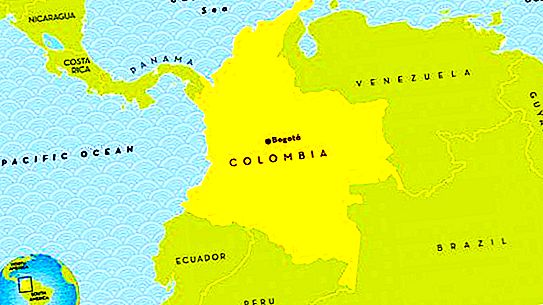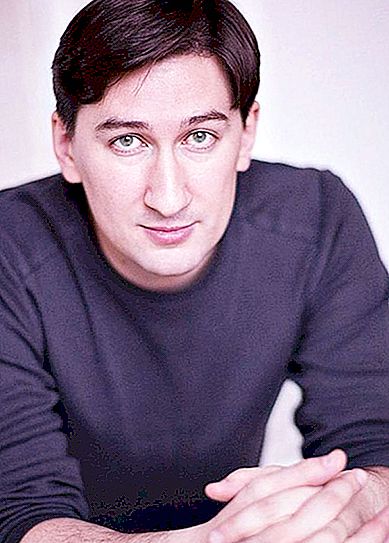Every day we walk the streets of the mysterious admirals. Who are these people after whom the streets of the new Baltic Pearl microdistrict in St. Petersburg are named?
According to the tradition prevailing in Soviet times, the names of the streets of Kirovsky and Krasnoselsky districts are associated with the Great Patriotic War. They bear the names of events and heroes. The names of the grandfathers and great-grandfathers of our people! The street names of the new quarter “Baltic Pearl” are no exception. This tradition, as well as the proximity of the Gulf of Finland, the "marine" theme in the names of residential complexes, determined the decision of the "fathers of the city".
The streets are named after heroes sailors. Let's take a closer look at these legendary personalities.
Rear Admiral Viktor Sergeyevich Cherokov, during the years of the heroic defense of Leningrad, commanded the Ladoga Flotilla.
The flotilla carried out military operations to protect the city, delivered supplies to the city and evacuated civilians. When the Red Army went on the offensive, Cherokov participated in blocking the enemy Courland grouping in the territory of present-day Latvia.
After the war, Viktor Sergeyevich commanded the White Sea Flotilla, based in Arkhangelsk. He commanded the Polish Navy from 1950 to 1953.
Then he was the chief of staff and 1st deputy 4VMF. Further, 10 years - from 1960 to 1970 - he taught at the Military Academy of the General Staff, was the head of the department.
He finished the service with the rank of vice admiral.
After retiring, he lived in Moscow. He wrote a book about the blockade and defense of Leningrad: “For you, Leningrad!” Victor Sergeyevich Cherokov died at the age of 87 in 1995.
Another street of the Baltic Pearl is named after Rear Admiral Vladimir Konstantinovich Konovalov.
Submariner. The hero of the USSR. Vladimir Konstantinovich met the war as part of the crew of the submarine "L-3". This submarine, under the command of our other hero Grishchenko, successfully acted in the Baltic, sinking a lot of enemy ships.
In March 1943, Captain-Lieutenant Konovalov was sent to the Pacific Fleet. He was trained, returned to the Baltic, and in October 1944 took command of the submarine L-3, where he had previously served. Until the end of the war, "L-3" under the command of the guard of the captain of the 3rd rank V.K. Konovalova participated in naval operations, drowned German transports, set mines so successfully that she took first place among submarines in the number and tonnage of sunk enemy ships.
July 8, 1945 for the achievements and heroism shown during the war, the captain Vladimir Konstantinovich Konovalov was awarded the highest award of the Motherland - Hero of the Soviet Union!
After the war, the hero of V.K. Konovalov continued his service in the navy. Until 1955, in command, then in staff and teaching posts. On May 7, 1966, Captain 1st Rank Vladimir Konstantinovich Konovalov was elevated to Rear Admiral. In the same year Rear Admiral Konovalov V.K. became deputy head of the Higher Naval Diving School named after the Lenin Komsomol ("LENKOM"), located in Leningrad.
The heroic submariner died in 1967 in Leningrad, who heroically defended at the beginning of the war. He is buried here, in the Kirovsky district, at the Red Cemetery.
The street of Captain Grishchenko, the “Baltic Pearl” microdistrict is named in honor of the same Pyotr Denisovich Grishchenko, the commander of the submarine “L-3” (“Frunzevets”), under whose leadership the hero of the previous biography, Vladimir Konstantinovich Konovalov, served until 1943.
Few people know, but this submarine captain vies for the title of our best submarine commander during the war with the "personal enemy of Hitler" the legendary Marinesco!
Let's get to know this person better.
The fate of captain P.D. Grishchenko has developed in a peculiar way. At the beginning of the war, his boat fought in the Baltic. The success of the "L-3" was due not only to the unconditional heroism of the crew. According to one version, at the beginning of the war Pyotr Denisovich was the only commander of a submarine of the Baltic Fleet with a higher academic education. He graduated from the Frunze Higher Command School and was well versed in tactics. Therefore, he allowed himself to sharply and publicly evaluate the unsuccessful decisions of the commanders of the Baltic Fleet.
This became known to Stalin himself. However, oddly enough, Captain Grishchenko was not shot and declared not "an enemy of the people." On the contrary, the leader listened to the talented commander and made the necessary suggestions to the command of the Baltic Fleet, led by another prominent sailor, Admiral Tributs. In honor of which one of the streets of the Baltic Pearl quarter is also named.
Of course, the admiral was not happy with such "popularity" of the young commander. Therefore, in March 1943, the captain was sent behind the "wings of the front" to command the anti-submarine defense of the Baltic Fleet. Despite the fact that Hitler and the Allies in the second half of the war did not plan to use submarines on a large scale in the Baltic. Moreover, introduce them to the Gulf of Finland. They concentrated on other fronts of the naval war.
That is, captain Grishchenko was in a kind of disgrace. The command did not allow him to the front lines of naval battles. After the war, not finding application for his talents and ambitions as the head of anti-submarine defense, Petr Denisovich Grishchenko concentrated on teaching.
The author of several books on the war, a candidate of historical sciences, died in 1991 in Moscow at the age of 82.
Another hero of our history took part in the fate of these outstanding sailors - Admiral Vladimir Filippovich Tributs, who also named the street of the Baltic Pearl microdistrict in St. Petersburg.
He commanded the Baltic Fleet during the war. It was different, both victories and defeats, in the biography of Admiral Tributs.
For example, the fleet, military and civilians were not very successfully evacuated from Tallinn besieged in August 1941, which was then the "capital" of the Baltic Fleet. Then, due to general disorganization, competent actions of the enemy and a powerful 7-point storm, thousands of people and dozens of ships were killed.
Data is diverging. However, we can talk about about 60 sunken ships of 300 and 10, 000 dead military and civilians. All this for a three-day operation. The skeleton of the fleet, even at the cost of heavy losses, was still able to be transferred to Leningrad. Where rescued ships and evacuated military contributed to the heroic defense of the city.
The naval defense of Leningrad was led by the commander of the Baltic Fleet, Admiral Vladimir Filippovich Tributs. The joint operations of the fleet and ground forces eventually led to a breakthrough, and subsequently to the lifting of the blockade of Leningrad. The success of Commander’s decisions Tributs eloquently speak not only of his many awards. But the fact that both after the war and after the death of Stalin, Admiral Tributs held the highest command posts in the structure of the Navy.
After resigning in 1961, Vladimir Filippovich was engaged in scientific, teaching work. V.F. Tributz is the author of 4 books and about 200 publications.
Admiral Tributz died in 1977 in Moscow at the age of 77.
“A people who do not remember the past have no future, ” the famous aphorism says. It is good to know that the names of the heroic sailors are immortalized in the street names of the new Baltic Pearl district. The city they actually saved.





